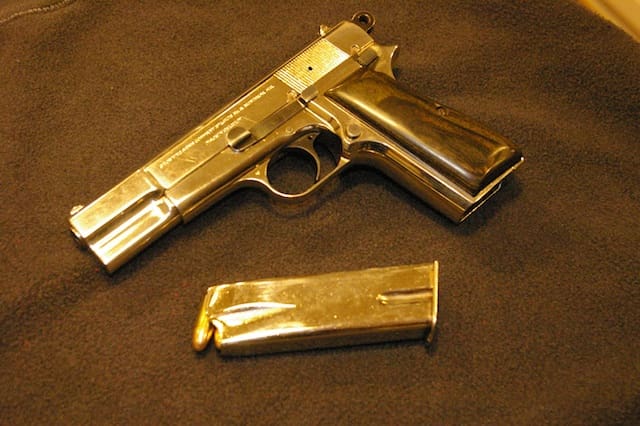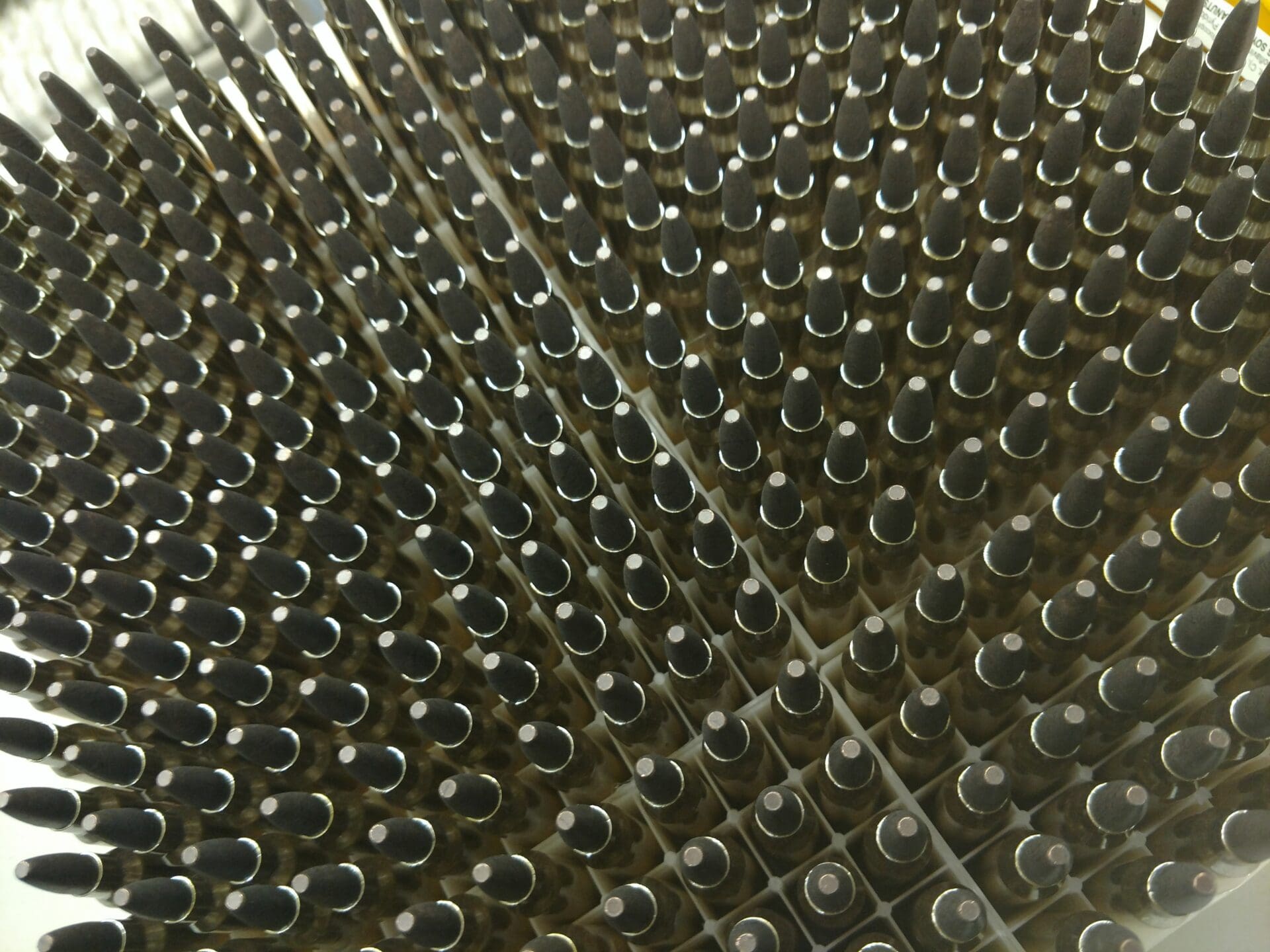My father was a Denver cop from 1963 until retiring in 1988. Amongst his numerous weapons, a Browning Hi-Power was his favorite non-service gun. At some point, he decided that nickel plating would be a nice touch. He passed away long ago, so I missed the chance to ask him why opted for plating the pistol. A good idea back then Today? I’d love to hear some feedback from TTAG’s Armed Intelligentsia. BTW, it’s my favorite gun to shoot, and it works flawlessly. [The best thread I found while researching this blog: caswellplating.com]





I love nickel plating! Of course, as with any finish there are pros and cons. The pro in this situation is a beautiful finish, especially when polished nicely. The cons are a very shinny/reflective finish (especially when shooting here in AZ), the finish will scratch somewhat easily, and you have to pay attention to what you use to clean the gun (i.e. no ammonia based cleaners or Hoppes #9). The last point is moot for me anyway, as I only use M7 Pro Cleaner/Degreasers anymore (hey that might be a good write-up!).
In reality, for a daily carry piece I would not recommend nickel. This is especially true for humid regions, or for people who sweat a lot as it can also tarnish the nickel (anodized aluminum as well). However, electroless-nickel (EN) does offer increased wear protection. For guns that get shot often, but not necessarily carried often, EN is a great choice (plus you’ll be the envy of all the old timers at the gun club!).
I think nickel has its place today just as it did back in the 70’s… at least I hope so! I just purchased a used 1967 S&W Model 36 (no dash) that I’m going to send back to S&W for a new hammer (it’s cheaper to have them fix it them for me to do it myself!) and some refinish work. I was torn for quite a few weeks as to which finish to choose – the standard blue or a high-bright nickel. I ended up with the nickel simply because I won’t carry this gun much (for summer CCW I use an S&W M60-14 2”) and I think it looks fantastic on these old school j-frames.
Patrick I think you may have to set your clock back a little further than the 70's. I think Nickel's heyday was in the 30's and then the 50's (needless to say in the 4o's most American guns were wearing a service uniform of phosphate coating a/k/a parkerizing, per military requirements.)
As I understand it Nickel was valued not so much for its pimp-tastic bling factor but for its ability to withstand corrosion. After stainless steel began to be used in firearms, the popularity of nickel plating waned.
If anything the nickel plating of the 70's might have been an attempt to recreate the hipness of a 30's look, although the flashy finish would certainly complement a full length fur coat/feathered hat ensemble that would make even the Huggiest of Bears green with envy.
Patrick – thanks for info and the tip on choice of cleaner.
Martin – I can't remember Huggy Bear ever packing heat – but who could tell? Thanks for triggering the memories!
Martin – I was referring to the surge of popularity of nickel plating in the 60's and 70's. Some time ago I read an article about how the introduction of stainless steel guns (1965) brought new life back to nickel plating. Instead of buying a new stainless gun (many of which had a 6 month or more wait!), they could have their gun nickel plated within 2 weeks.
I'd have to check the history more, but I don't think nickel was very popular in the 1930's. After the Great Depression, I cannot imagine a lot of people were spending money on "luxuries". Pre-1920’s, electrolytic nickel was popular, but then again so was hard chrome. Chrome being mostly aesthetic, does offer some protection but not nearly as much as nickel does. Electrolytic nickel tends to flake off and generally has a hard time adhering to the carbon steel substrate. Electroless (aka auto-catalytic) nickel greatly increased durability. Many nickel-plated Browning HP’s are still in great shape today, mainly due to the well prepared substrate and quality EN application.
Comments are closed.